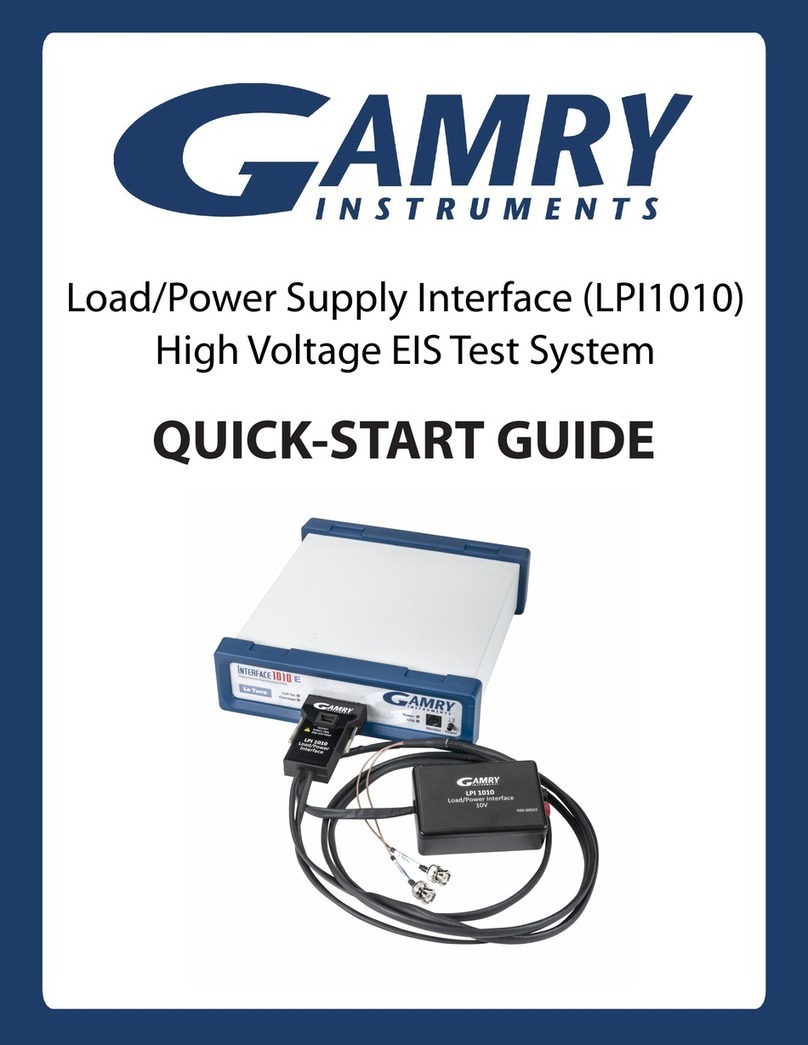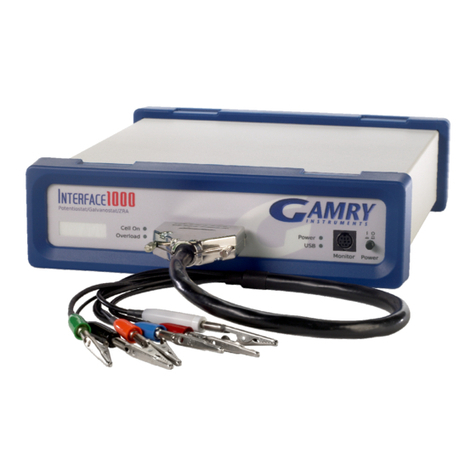7
Chapter 5: Cell Connections ..........................................................................................................37
Cell Cable Overview .........................................................................................................37
Ancillary Apparatus ..............................................................................................37
Fuses in the Cell Cable......................................................................................................37
Normal Cell Connections ..................................................................................................38
Three-Electrode Battery Connections.................................................................................39
ZRA Mode Cell Connections .............................................................................................40
Membrane Cell Connections.............................................................................................41
Fuses in the Cell Cable......................................................................................................41
Testing For Open Fuses........................................................................................43
Chapter 6: Panel Indicators and Connectors ...................................................................................45
Front Panel .......................................................................................................................45
Power Button ......................................................................................................45
The PWR LED .....................................................................................................45
Cell Connectors ...................................................................................................46
Monitor Connector ..............................................................................................47
The USB LED.......................................................................................................47
Cell On LED ........................................................................................................48
Overload LED......................................................................................................48
Personalization Label Area ...................................................................................49
Rear Panel ........................................................................................................................50
Power In Jack.......................................................................................................50
Chassis Ground....................................................................................................50
USB Port .............................................................................................................51
User I/O Connector .............................................................................................52
Sync Port.............................................................................................................52
Chapter 7: Instrument Circuitry ......................................................................................................53
Interface 5000 Schematic/Block Diagrams .........................................................................53
Appendix A: Interface 5000 Specifications .....................................................................................59
Appendix B: Interface 5000 Cell Connectors ..................................................................................65
Appendix C: I/O Connectors ..........................................................................................................67
User I/O Connector ..........................................................................................................67
Sync Port ..........................................................................................................................67
Monitor Connector ...........................................................................................................68
I Monitor Signal ...................................................................................................69
E Monitor Signal ..................................................................................................69
External Signal In .................................................................................................70
Temperature Monitor Signal.................................................................................70
Appendix D: Power LED Blink Codes and Error Messages...............................................................71
Blink Codes ......................................................................................................................71
Normal Start-up...................................................................................................71
Failure in an electronics module...........................................................................71
Severe problem ...................................................................................................71
Error Messages and Limitations..........................................................................................71
Appendix E: CE Certificate .............................................................................................................73
Declaration of Conformity.................................................................................................73
Appendix F: Heat in Interface 5000 Multichannel Systems .............................................................77
Introduction to Device Power-dissipation .........................................................................77
Potentiostat/Galvanostat Power Model ..............................................................................77
Discharging a Battery ........................................................................................................78
Single Interface 5000 ........................................................................................................79
Vertical Stacks...................................................................................................................79





























